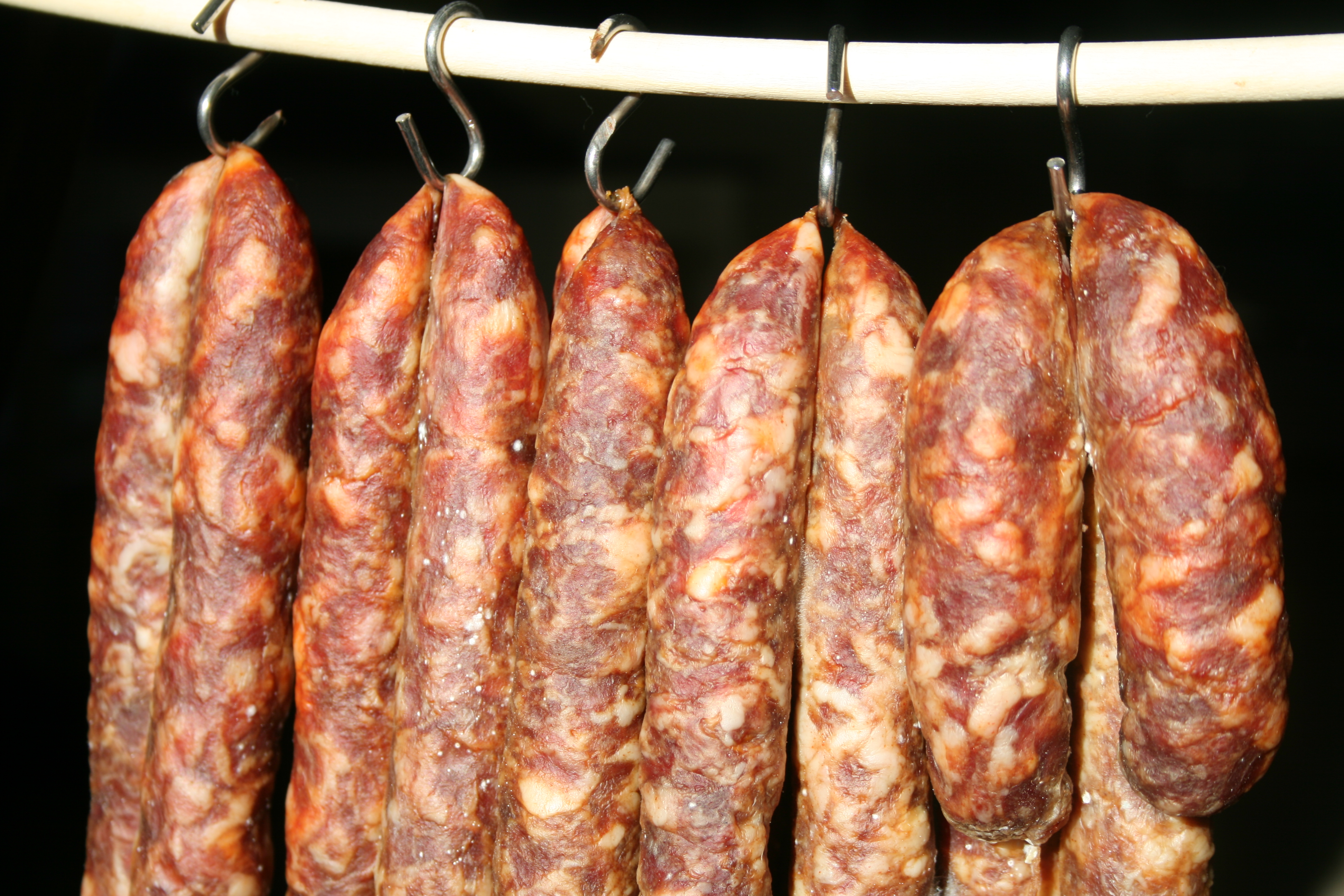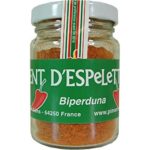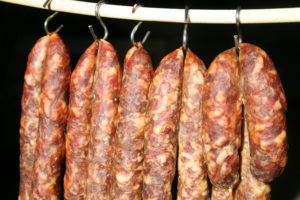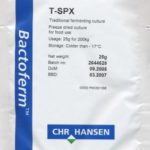
To Make a Salami, Part 3, First Try, Basque Chorizo
…and we’re back. After more than a year at sea, I’ve returned and have begun to actually use the new box I made. Now, let me tell you about all my failure.


This is my Basque Chorizo. It is made with Sel Gris De Guérande (a grey French salt harvested from the salt plains north of Saint-Nazaire), Piment d’Espelette, Chiquilin Sweet and Hot Paprika, and Piri Piri Chili Pepper ordered right from the Basque country. The piri piri even came in an envelope with the Spanish postal stamps and everything. I got the recipe from an authentic Nevadan Basquian, or at-least an approximation using pinches and dollops as measured quantities. I also got the finest pork shoulder, extra leaf lard, and my Prague salt.
And the Cure, Bactoferm.
Now here’s where I screwed up. If you remember back to my curing box building days, Part 1 and Part 2, when installing the temperature and humidity controllers, there was an option to install a heater element along side the refrigerator portion. I did not install one. Let me explain why that was a bad idea.
So back to the sausage. When curing with bacteria, you need to do a few things before hand to ensure this works correctly, and a couple things afterwards. Firstly you need to make sure that the curing chamber is sanitized, especially from mold. I used Quaternary ammonia to clean out the curing box. This kills off most of the bugs and fungus inside the refrigerator, but there is always mold spores and bacteria floating around in the air. It won’t necessarily be a problem if you keep an eye on the temperature and humidity.
Next I needed a way to heat up the curing box to 90°F. The idea is that the bacteria in the Bactoferm will eat up all the available nutrients inside the sausage and acidify the meat so bad bacteria and stuff won’t form, thus curing the meat. In order for that to work, you need to create a moist and warm environment for the Bactoferm to work before cooling the links back down to dry aging temperatures. So I used a heat lamp with a 100 watt bulb. I also turned up the humidifier to max because I needed 90% humidity. These were both very stupid ideas.
 My theory was the light bulb would heat the curing chamber up, while the refrigerator would keep it from over heating, and the humidifier, turned up to max would offset the constant dehumidifying action of the refrigerator cooling. Wrong. The refrigerator’s poor little compressor was not that powerful. After only a couple hours, it was near 100°F in the box and there was water streaming down the sides of the box and a pool of water under the empty humidifier. I had to cure it for 24 hours. This wasn’t going to work. So, I swapped out the 100 watt bulb for a 15 watt bulb and turned down the humidifier to the lowest setting.
My theory was the light bulb would heat the curing chamber up, while the refrigerator would keep it from over heating, and the humidifier, turned up to max would offset the constant dehumidifying action of the refrigerator cooling. Wrong. The refrigerator’s poor little compressor was not that powerful. After only a couple hours, it was near 100°F in the box and there was water streaming down the sides of the box and a pool of water under the empty humidifier. I had to cure it for 24 hours. This wasn’t going to work. So, I swapped out the 100 watt bulb for a 15 watt bulb and turned down the humidifier to the lowest setting.
But it was too late. Because I didn’t adequately test out my settings before I started, the links got all black and blue moldy and I threw them out. It was a good test run, but cost me some delicious sausages. Test your stuff BEFORE you start! Like for a week! And keep a record!
One thought on “To Make a Salami, Part 3, First Try, Basque Chorizo”
Comments are closed.